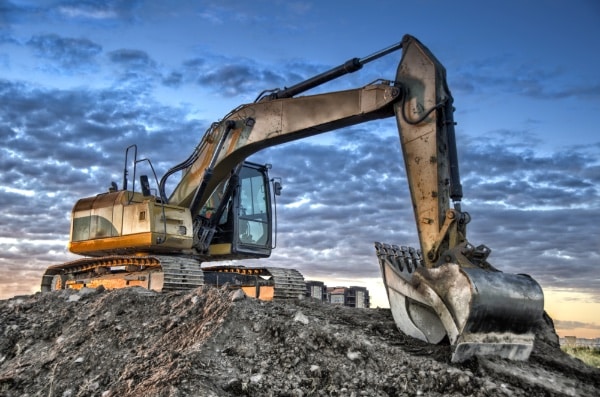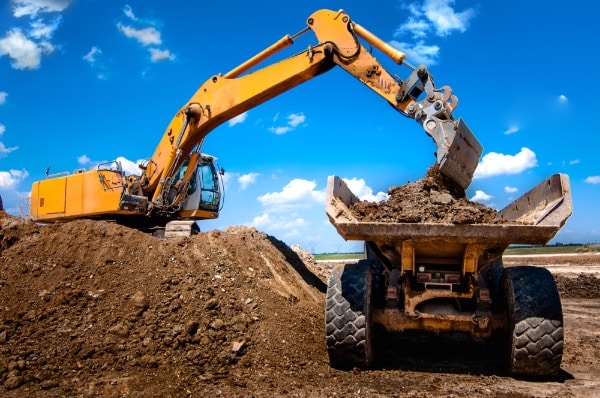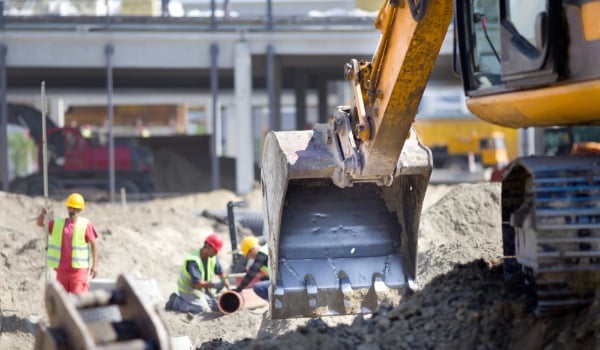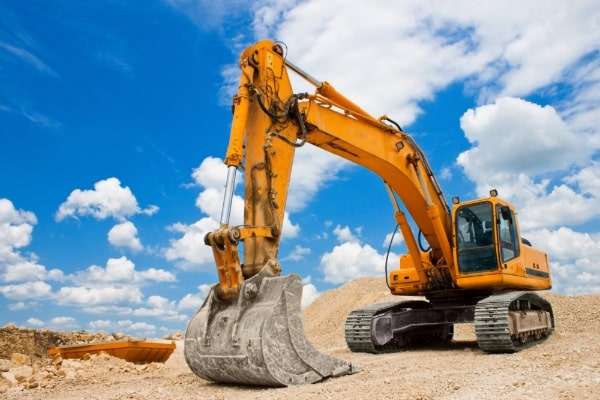11+ Excavator Safety Tips – [Updated for 2023]

Excavators weigh several tons and operate in dangerous environments, meaning there’s always the chance of an accident. The most common accidents involving excavators are due to improper use, poor positioning, and carelessness. This is often the result of untrained personnel operating the equipment.
Our excavator safety tips offer essential guidelines to help you establish proper safety procedures for excavators and keep your workers safe on the job site. This is a great supplement to our excavator safety training video.
Top 11 Excavator Safety Tips
These safety tips are designed to prevent the most common excavator accidents. However, this doesn’t mean your work is done – your machinery or work environment may pose unique challenges and risks. Consulting the operator’s manual, inspecting your equipment, and assessing environmental factors are among our top tips. Make sure you know what you’re working with.

1. Ensure Only Trained Personnel Operate an Excavator
Are excavators safe? For large and dangerous pieces of machinery, most modern excavators possess excellent safety features and fail safes. However, these only matter when they’re operated by a trained professional.
Anyone operating an excavator must have a firm grasp of the operator’s responsibilities. Safety comes from ensuring that only trained excavator operators can use this machinery – there are no workarounds.
Numerous accidents are caused each year by letting an untrained operator use unfamiliar equipment. They may have worked with similar pieces of machinery, but this still constitutes a significant job site safety breach, according to OSHA. Full training is mandatory, from entering the cabin using the standard three-point method to know how to operate the propel motors to control the excavator’s speed.
2. Keep the Operator’s Manual to Hand
Even a trained professional should always have the operation manual handy. It should be kept on the equipment at all times and consulted for any queries. The manufacturer will provide this manual. If you’ve purchased your equipment directly, you must keep all additional paperwork, including the operator’s manual.
If you’re using an excavator rental service, check that the rental company provides the operator’s manual along with the digger.

3. Check Construction Equipment Daily
What precautions should you take with a digger? Preparing before the start of each workday is essential. Physical inspections should take place at the start of each working day by a trained operator to ensure the digger is functional.
The inspection should cover components of the digger, like the excavator’s tracks, the excavator’s bucket, and its arm. Search for hydraulic leaks, loose bolts in the bucket hinge pins, and worn or cracked teeth. Any faults should be reported, and the digger should be taken out of service until repaired. It should also cover motor components are functioning correctly. Operators should examine belts, steering, and braking and also check safety devices such as fire extinguishers are present where applicable.
4. Wear a Seat Belt – Always
So many accidents are caused by operators not wearing seat belts. It seems elementary, but it’s one of the most important safety tips. Operators should always use these basic components, understanding that they’re designed to keep everyone safe. A digger with its arm at full stretch can quickly destabilize. A seat belt can save a life.
5. Communicate with Co-Workers
Nearby workers should know when the digger is operational. To raise awareness, excavators should be able to call out or signal colleagues who may be wearing protective headphones to ensure they achieve adequate swing clearance before work starts. Communication is your best safety feature. Colleagues should also always wear bright work clothing to increase visibility.

6. Check the Job Site
What is the proper position for digging with an excavator? Operators should ensure that tracks reach ground level and that the machinery has proper tension before starting work. This all begins with a full inspection of the work site each day.
Operators should mark out safe and unsafe zones using safety fencing to help other workers stay clear of dangerous areas without impeding their work. Excavating excavators work best when they operate in an unchallenged zone and don’t have to spend time waiting for colleagues to pass by or move to safety.
The excavator shouldn’t be placed on rough terrain wherever possible. It should sit on a flat surface, resting with appropriate tension and all-around clearance to guarantee visibility and machine stability. Workers should aim to create a level surface if there is no obvious choice.
7. Only Use It For Its Purpose
What should you not do in an excavator? Identifying dangerous behavior is a vital part of establishing good safety practices. Here’s what not to do (you’d be surprised how common some of these are):
- Climb on the arm
- Sit in the bucket
- Have more than one person in the cabin
- Sit on the roof of the cabin
These are all good ways to cause severe injuries and incur heavy fines from OSHA. Safe excavator operation is much easier when the equipment isn’t treated like a big kids’ toy.
8. Don’t Destabilize the Work Surface
A critical element of excavator safety is keeping the surface surrounding the digger stable. It can be well-prepared and stable at the start of the day, but if you start to dig underneath the machinery, it could quickly overbalance.
Accidental cave-ins can be fatal. Placing dirt underneath the digger is also not a stopgap solution – material excavated should be drawn from a site well away from the digger. Lifted dirt isn’t as stable as solid ground and can’t be relied on to stabilize the digger.

9. Go Slowly
Many safety features work best when the digger is used cautiously. Keeping it on half-throttle avoids burning excess fuel and potentially running operations to an early close but also minimizes the risk of moving onto an unstable area.
The driver’s hand should always be on the key switch to shut down if needed – the auto idle switch is your friend! This also helps prevent collisions with a power line or from hitting water pipes. If you feel there’s a risk of hitting such features, you should contact local utility companies to arrange a solution.
10. Keep the Excavator Bucket at a Safe Distance
You should know that being struck by a bucket is one of the most common excavator accidents, according to the CDC. The digger should operate with the bucket attachment lowered wherever possible – it should never rise above the cabin. While the digging arm shouldn’t be used on the ground surrounding the vehicle, it can also be a risk putting it at full stretch. This risks overbalancing the digger if too much material is dug up at once – drivers should understand load limits by consulting the operator’s manual. Stick to an area where the arm can safely operate at its full lifting potential.
11. Conduct a Full Inspection of the Excavator Regularly
While the equipment should be inspected daily, it’s essential to periodically arrange more thorough inspections from a trained engineer. Machinery should be given a detailed inspection every three months for general wear and tear and inspected annually by an engineer to ensure it’s fit for operation.
Summary
Our excavator safety tips will help keep your workers safe and protect you from OSHA fines. It seems like common sense, but it’s worth ensuring that all your operators understand and abide by these rules.
Keep the manual and other well-marked materials on hand for reference. Avoid cave-ins by digging at a safe distance. And most importantly, ensure that every operator has undergone the proper excavator safety training before setting foot in the cabin!